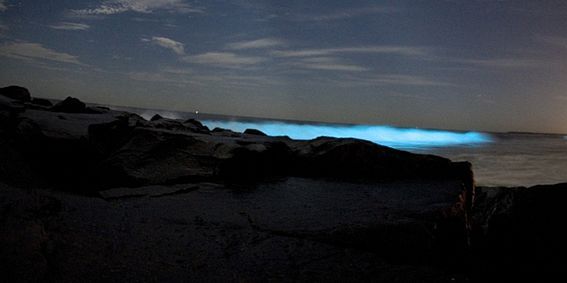“...how do orcoids keep their population? The migrations appear to be surplus herds, but no expedition ever found evidence of the farming or transhumance necessary for the Orc Belt to sustain such numbers. And even through volcanic soil usually is quite fertile, no orcoid was ever seen planting or even gathering vegetables. This, plus the fact that they metabolize iron into outgrowths of cold iron, makes me think that they somehow leech the fairies, and that the otherworldly river between the Belt and Numéria was created to prevent them from invading the fey realms. They could even be the reason for which the fairies contracted their lands until the present territory north of our principalities.” —Excerpt from A Plague of Bone and Iron, a kosinbian compilation of orcish studies.
— I’m a hundred years older than you,
but I only learned to kill and enjoy it, my little lord. If you truly
wish my aged wisdom, know two things: age does not equals wisdom, and
ten years of leadership taught you more than my hundred and twenty
having fun — The weight in Khumba’s voice was stressed by the fact of
being a qapukulu, practically a biped and intelligent elephant.
—
And the second? — Asked Shevet, furrowing his lips while diverting his
gaze towards the ancient scarring in the ample gut in front of him.
—
Do not trust a veteran which never lost or you will end up losing along
with him. That imperial commander, he smells as one who always won. Such a fragrance hides a stench of imminent disaster — Khumba raises
his trunk, waving it up and down — Stench of disaster, yes. The lack of
fear in his sweat emphasizes that. You lost your family, my mahout
lord, and grew up knowing how to lose. That’s why I obey you. Any idiot
knows how to win, but thinking and losing, to admit defeat and react
from this fear… That’s why I obey you. But enough wisdom, I’ll now drink
those casks.
Shevet
smiled and — Ghost pains and stinging scars, Khumba? No ache in the
heart for so many kills yet? Or in the liver, with so much booze?
The
pachyderm snorted his proboscis, scaring two soldiers nearby — I’m old,
but not soft, my desert lord. My heart loves so many fights and the dwarf
inside my liver loves so many drinks. Only broken bones, burns and
missing pieces complain about nuisances like flaming darts. Even more as
that time in which they were stuffing my belly and giving me an
heartburn. I remember of ripping one off with my snout and looking at
the incredulous in front of me. My fat belly had taken most of it but I
felt close to collapsing. So I licked the tip, said I was well-done.
Half ran. At that point I recovered my broken tusks and…
— No, not again, go drink before I get sick. Again.
— As per my mahout
wish – Khumba turned towards the night feast, snorted his trunk like a
tuba, and went in the direction of the casks, which seemed to
tremble with fear. Or maybe the qapukulu’s column-like legs were the
reason.
(He always changes the subject when I remark the drinking)
He
thought he could fool anyone as a mix of proud warrior and reminiscent
old man, but Shevet knew him better than that. Khumba “Battalion”
Purushottama saw himself as an “itself”, and his appearance matched
that. Offered as tribute to the khejali sultanate caste still a child,
fused to an elephant’s essence and raised as an elite guard, he became
an old war beast. The ears were laden with condecorations made into
earrings. When they slept in the open, it sufficed to settle around his
huge frame and its howling snores, no predator dared to go near.
But
he was right. That commander wasn’t suitable for this endeavor. This
was the Allied Ironway, the seal over the military and commercial
treaties which would unite the Lega Groura, Khejal, Kosinbia and the
Imperial Duchies Union, better known as the Northern Empire, into a
continental block. With strong involvement of Technogestalt, through the
trains and tools imported by the empire. Something so important
shouldn’t be so badly guarded. Perhaps that was the reason for “Karava
Thukana”, the first adventuring company sanctioned by the emperor, was
here. And like every adventurer troupe, a bunch of misfits. Besides
Khumba, there was he, a nabâtu, elf from the oasis of the
Centipede-Hydra tribe, and as such, of glazed mahogany skin around the
slender body of one grown with little water and much struggle. The
stubble of one more worried with survival seemingly highlighting the
dark and wavy hair falling down to the shoulders. Nabâtu always covered
their body when near strangers, but he had spent too long far from his
oasis for that, and covered only the bare minimum. After learning magic
in the duchy of Sycamore, he had been divided between the nabâtu which
raised him and the feidralin elves which taught him so much, until
realizing that the orcs were a threat to both. N’kaje and Nalalka
agreed, and had joined him soon after Khumba.
...
— Khumba, tell them the reason of our name.
— You tell!
— You can tell best, you were there after all.
— Uggghh, alright. Listen little northerners, I’ll only tell it once. This is the story of the angriest man I have ever met. He was prone to disproportionate revenges. How disproportionate? During
a skirmish, He was roaring to the enemy as usual. Choked when a bullet
fired by someone broke a tooth and got stuck in his cheek. More than the
pain, he was angry because of the interruption, and hurled himself
towards the mounted pistoliers of the enemy company. Killed fifteen and
scared the rest. Not that he felt victorious, still sulking for not
finding out who had shot him. You could hear his teeth grating and the
crack when he bit the lead — Khumba smiled in the tranquil and frightful way that only a three-ton creature manages to —
You had to see his bloody grin when he decided to take revenge on the
bullet. Picked a suitably drunk smith and convinced him to shape the
projectile into a new tooth to replace the broken one. After some
hammer blows so straining the smith sobered up, the barbarian went to
chew plundered leather boots until becoming calm. After that, everybody
called him Karava Thukana, “bitter spit”, because they were afraid of when he spit the lead tooth by laughing too much. My hero. Had to pay homage to him.
Shevet used the noisy and lively distraction of Khumba’s stories to examine the situation .
(Here we are, under a beautiful night gilded by the Gharian Ring, anxious and
tense. A centuria of goblin slingers, skillful by need. Two centuria of
spearmen, humans and hobgoblins. Not experienced enough to handle the
first orc charge. Pity, wanted Khumba flanking, but he will be the giant
target as usual. But and the workers Shevet? Better to leave them out.
What would your tribe say about that?).
— For someone who doesn’t adore lit fires like me, you are much immersed on it —
Then a leather-bound hand with silvered, pointed thimbles covered his
vision. Its heat was equally tactile, and familiar to the point of being
pleasant. Shevet went out of himself and answered – Nalalka, good to
feel you. Did you finish the scouting?
—
Yes. It was so boring that N’kaje was almost went hunting by himself, so I
chose to return. I prefer an anxious and tired gnoll than looking for
one the whole day tomorrow – Nalalka Ebura settled besides Shevet, and
gazed into the camp fire. While she was distracted by heat and
brightness, Shevet took a few glimpses to assure that she hadn’t left
anything out. The same brown eyes, small nose, salient cheekbones. Jet
skinned like all kosinbians, lustrous from sweat. Forehead covered by a
braided fringe ending in cowries, in front of a nape hidden by a loose,
frizzly bun, like a great black cotton tied by what she called a “stupid
wizard’s” golden wand. Like the bun, there were many plentiful measures
in Nalalka.
(Like the caravans say, she was one of those women
who seemed to learn with camels how to bodily store water. And what does
this has to do with her well-being Shevet?)
Opening her khalat-style robe, exposing a long pagne
skirt of washed-out linen and those balls covering her whole chest.
All that ammunition, plus seashells filled with gunpowder. She had left
the piracy, but not the excitement of risking her life.
(As loaded as always. I wonder if...) CLANG!
From the dark, a javelin had buried itself in the gravel — Orcs, it’s the orcs, by Diveus I’m not armed! — A soldier shouted so near a second one that he recoiled before understanding what the words meant. Bulging eyes crossed, but —
No, they aren’t. I was just testing if things still fell down. You know
how it is, one can never be sure. They are, almost sure of it — N’kaje came from behind a tent, satisfied that his inspection javelin fell once again instead of…
(Whatever the alternative is, he only says it’s worse than rárérírórú, and he only screams that in dire circumstances)
A
gnoll, mix of man and hyena, crazier than both. Not even Nalalka knew
much about him before being on the same crew. A goatee which went from
the chin until the neck like a mane, plus an eye patch. He looks nice,
until one notices that his smile is more set than a brick in a wall, and
slightly twisted in the toothless corner.
— N’KAJE, YOU BASTARD, you scared the workers. This one here just spilled, sniff, what’s this stuff? —
The pachyderm approached his trunk to the stain on his arm — Dwarf,
what’s this? — The said dwarf seemed very relieved that Khumba was more
interested in the drink than the stain — Samogon, dom Khumba. “Devil booze”. It’s a spirit seasoned with pepper, strong stuff. Like the khejali araq.
— And why were you carrying an entire bucket of it?
— From where I come from, it’s sold in buckets.
— And this “where” is…
— The mountain range in the imperial West, Hamask Barbagia. Land of the shardokan, "folk of the keen shards".
— Shard... Aren’t you the ones who mine eternal ice, which the sultans use to cool their drinks?
— That’s right! My father is an ice cutter.
Khumba
noticed that besides him and the dwarf, one could only listen to the
fire sparkling — Speaking of ice, this is cold as whale’s butt and too
quiet. Sing! Rant! Drink! Warm yourselves, it’s the perfect
cold to start friendships — After looking at the downcast expressions
around, he turns to the dwarf — Are you afraid to die? — The shardokan
gulps loudly and — Yes, dom Khumba.
—
So you have the will to live. Live, live all that you can until
tomorrow, and remember this life to keep on living afterward. Behaving
as dead now will make you dead later. You, hobgoblin, I like your tusks,
makes me remember my bygone ivory. But that spear is horrible. Do you call that sharp? I
have more edge on my calluses. You all come here, I’ll show what it
means to sharpen something. And the next who calls me “dom” will be my
whetstone.
— Any
finds today? — Shevet was doubtful if there were orcs nearby, after
twelve quiet days. Nalalka and N’kaje showed bitter faces just as they
heard him — What happened?
—
We didn’t find any orcs, but — (Nalalka hesitating is never good) — We
found carrion and trails several days old, and those weren’t the usual
predators. We think it’s an herd as big as this garrison, hungry
and nearby. They will attack as soon as they are desperate enough.
(Bad news, Shevet, best to replan all of it)
— That’s not good.
— You
don’t say, I had no idea until now — Nalalka’s sarcasm was so ingrained
it came out even when she didn’t want to mock — But seriously, how are
we going to deal with those numbers? Were it only us it would be easier,
but no, this is our “glorious” first mission as sanctioned adventurers,
we can’t pick them off slowly. Oh no my Kahonua, we have to make a show
for the imperials.
—
And a show they shall have. We only need to make sure the workers are
safe, but can see the battle. I’m considering using the railroad as
bait, what do you think?
— Really? Can we do that?
(No, but a successful campaign depends on much planning and a double of improvisation)
Nalalka
froze her expression and mumbled something to herself while wiggling a
cowrie in the corner of her forehead — This makes things easier. Many
heavily armed warriors near the railroad, the workers watching us from behind, hmmm, it should be enough meat and iron put together for the
orcs to target us. But
it will depend on the direction they come from. Probably there — She
points her finger towards the northern tree line, and with the precision
that only misfortunes can have, a painful roar was heard. —
This can’t get any better. They are carving themselves. Shevet, think
of something to say before the soldiers notice it, or tomorrow they will
see Kahonua, or whatever gods they prefer.
The elf nodded.
(They have to care about the railroad, perhaps if...)
When
all heard a grating of bone on metal, the soldiers were dazed, like if
their spines became ice near breaking point — It’s only a little noise,
ignore it. It’s like I do in here — N’kaje pokes his own head.
While
the soldiers couldn’t decide between fearing the noises or N’kaje,
Shevet grabs the distraction and finishes — Northerners, know this about
the orcs: they look like big hairy apes, strong and without any
instinct of self-preservation. Once reaching us, they will eat everything,
even the rails and your weapons. Then, each wound they have will be
scabbed over by bone and iron. We have seen hairless orcs, so encased
with bones that they looked to be made of stone. Now, think on how many kilometers of railroad you have already
laid out, on how many tons of iron go straight into your homeland, where
are those people that you all know and wish to see again. And think on
how the orcs work only to destroy the work of others.


































